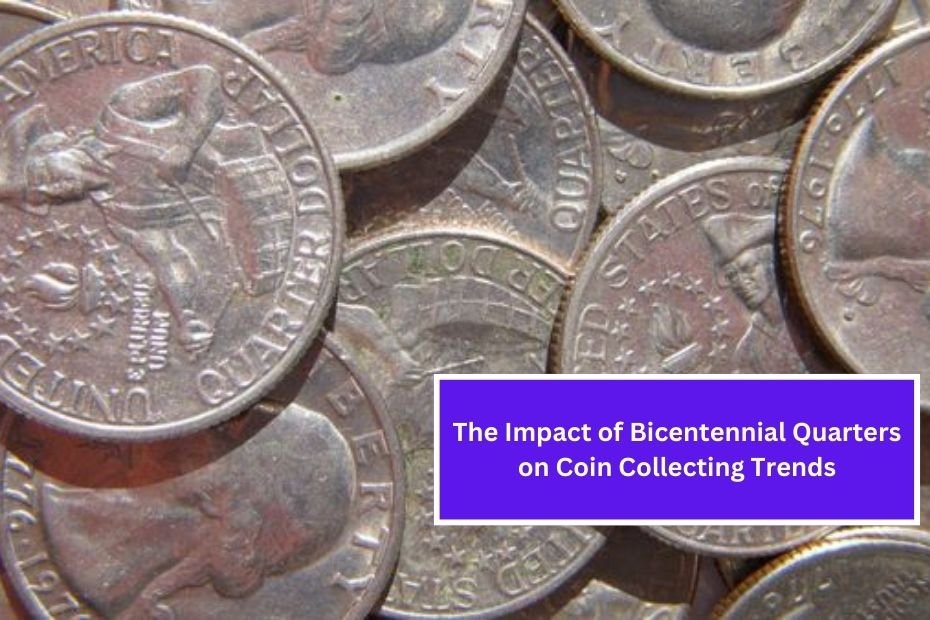Coin collecting is a fascinating hobby that attracts millions of enthusiasts around the world. Among the many coins that have captured the interest of collectors, the Bicentennial Quarter holds a special place. Released in 1975 and 1976 to celebrate America’s 200th birthday, these quarters not only represent a unique period in U.S. history but also have significantly influenced coin collecting trends. In this article, we’ll explore the Bicentennial Quarter’s background, design, rarity, and its lasting impact on the world of coin collecting.
Introduction to Bicentennial Quarters
The Bicentennial Quarter was part of a special program initiated by the U.S. Mint to celebrate the 200th anniversary of the signing of the Declaration of Independence. The program included changes to several denominations of coins, including the quarter, half dollar, and dollar coins.
Background of the Bicentennial Program
In 1975 and 1976, the U.S. Mint introduced the Bicentennial designs to encourage public interest in American history and coins. The decision to modify the quarter was significant, as it marked the first time in over 40 years that a major design change occurred for this coin.
Why 1975 and 1976?
The choice of these two years was intentional. The actual bicentennial year was 1976, but the U.S. Mint started releasing the coins a year early to generate excitement and interest. This approach allowed collectors to begin gathering these special coins before the official celebration.
The Design of the Bicentennial Quarter
The Bicentennial Quarter features a unique design that sets it apart from other quarters in circulation. Understanding this design is crucial for collectors.
Front (Obverse) Design
The obverse side of the Bicentennial Quarter retains the traditional image of George Washington, which has been a constant since 1932. However, the coin’s edge includes the phrase “1776-1976,” celebrating the nation’s 200-year history.
Back (Reverse) Design
The reverse side is where the real innovation occurs. Instead of the usual eagle design, the Bicentennial Quarter showcases a depiction of a drummer from the Revolutionary War. This change reflects a spirit of patriotism and commemorates the historical significance of the period.
Mint Mark Variations
The Bicentennial Quarters were minted with two distinct mint marks: the “D” mint mark for Denver and the “P” mint mark for Philadelphia. The “P” mint mark is particularly significant as it was the first time a mint mark appeared on the obverse of a coin. This variation adds an extra layer of interest for collectors.
Rarity and Collectibility
The rarity of a coin often determines its value in the collecting community. Understanding the production numbers and conditions can help collectors assess the worth of Bicentennial Quarters.
Production Numbers
Approximately 1.6 billion Bicentennial Quarters were produced. While this large quantity might suggest they are common, certain factors contribute to their rarity in specific conditions.
Condition Matters
The value of a Bicentennial Quarter can vary significantly based on its condition. Coins are graded on a scale from 1 to 70, with 70 being perfect. Many circulated Bicentennial Quarters are worth only face value, while uncirculated or proof versions can fetch much higher prices.
Special Editions
In addition to regular circulating quarters, the U.S. Mint released special proof sets and uncirculated coins during the Bicentennial celebrations. These coins often have higher demand and can command premium prices in the market.
The Impact on Coin Collecting Trends
The introduction of the Bicentennial Quarter had a lasting effect on coin collecting trends. Here are some key impacts:
Increased Public Interest
The Bicentennial Quarter sparked a renewed interest in coin collecting during the 1970s. Many Americans, inspired by the celebration of their nation’s history, began to collect coins as a way to connect with their heritage. This surge in interest helped to create a more vibrant and diverse collecting community.
Educational Value
The Bicentennial Quarters also served an educational purpose. Many collectors used them as a starting point to learn more about U.S. history, coin design, and the minting process. Schools and educators often incorporated these coins into lessons about American history, further promoting the hobby.
Emergence of Collecting Communities
The popularity of Bicentennial Quarters led to the formation of various coin collecting clubs and organizations. These groups provided collectors with resources, events, and opportunities to trade coins. This sense of community made the hobby more accessible and enjoyable for newcomers.
Influence on Modern Minting Practices
The Bicentennial Quarter also influenced modern minting practices. The successful release of the special designs encouraged the U.S. Mint to explore other commemorative coins in subsequent years. Today, many collectors look forward to new designs and special editions that celebrate significant events and themes.
Collecting Strategies for Bicentennial Quarters
For those interested in collecting Bicentennial Quarters, here are some strategies to consider:
Start with the Basics
Begin your collection by acquiring circulating Bicentennial Quarters. These are widely available and provide a solid foundation for your collection. Look for coins in good condition to enhance your collection’s value.
Explore Special Editions
Don’t overlook the proof and uncirculated versions of the Bicentennial Quarter. These coins often feature better quality and can be valuable additions to your collection. They can usually be found at coin shows, online marketplaces, and through coin dealers.
Learn About Grading
Understanding how coins are graded is crucial for any collector. Familiarize yourself with the grading scale and how to assess the condition of your coins. This knowledge will help you make informed decisions when buying or selling.
Join a Coin Collecting Community
Consider joining a local or online coin collecting club. Engaging with fellow collectors can provide valuable insights, resources, and opportunities to expand your collection. Sharing knowledge and experiences can enhance your enjoyment of the hobby.
Conclusion
The Bicentennial Quarter represents more than just a coin; it symbolizes a pivotal moment in American history and the joy of coin collecting. Its unique design, historical significance, and impact on collecting trends have left a lasting legacy.
As you embark on your own coin collecting journey, remember the importance of the Bicentennial Quarter in shaping the hobby. Whether you are a seasoned collector or just starting, these coins offer a wonderful opportunity to connect with history and the community of collectors.
In the world of coin collecting, the Bicentennial Quarter will always hold a special place in the hearts of enthusiasts. Its story continues to inspire new generations to explore the fascinating world of coins and the rich history they represent. Happy collecting!

